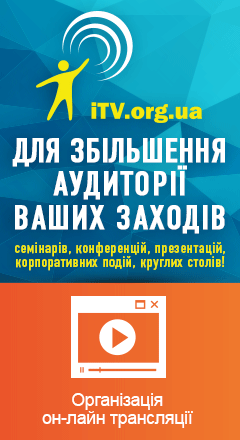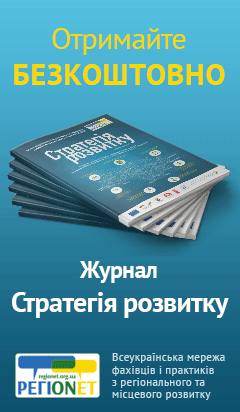G.S. Pisarenko Institute for Problem of Strength of the NAS of Ukraine
- Address:2, Timiryazevskaya str., c. Kyiv, 01014, Ukraine
- Telephone:+38(044) 285-16-87, 286-16-84
- Web-site:
Director - V. Kharchenko
G.S. Pisarenko Institute for Problems of Strength of the National Academy of Sciences of Ukraine (full name), IPS, NAS of Ukraine (abbreviated name), hereinafter "the Institute", is the scientific research entity within the organizational structure of the National Academy of Sciences of Ukraine
The Institute is under the authority of the National Academy of Sciences of Ukraine and is affiliated with the Department of Mechanics of the NAS of Ukraine.
The Institute is a state non-profit scientific organization with the rights of a legal person. In its activities the Institute is guided by the acts of the NAS of Ukraine, the regulations and statutory acts of the NAS of Ukraine, as well as the Institute regulations.
The Institute concludes agreements on scientific and technical cooperation with organizations including foreign and international ones and carries out its foreign economic activity in the established order.
The Institute incorporates 10 scientific departments and one scientific and technical department. At present there are 375 people working at the departments of the Institute, including 290 at the Institute itself and 85 at the Special Design and Technology Bureau (SD&TB). Among them there are 148 research associates, including 3 academicians of the NAS of Ukraine, 38 doctors and 58 candidates of engineering science. 15 postgraduate students do their postgraduate studies at the Institute.
At present, investigations at the Institute are performed in the following research areas approved by the Presidium of the NAS of Ukraine:
- ultimate state and strength criteria of materials and structures;
- calculation and experimental methods for studying the stress-strain state;
- fracture mechanics and survivability of structures with cracks;
- vibration of nonconservative mechanical systems.
The development of these lines of research involves studying the ultimate state and strength criteria of structural elements of power, transport, and aerospace engineering, and thermal and nuclear power engineering, which operate under extreme conditions; studying the integrity and survivability of materials and structures with crack-like defects under static and cyclic thermomechanical loading, as well as reliability of mechanical systems under conditions of vibration; devising methods for the calculation and investigation of the stress-strain state of structural elements taking into account the influence of manufacturing, service, and other factors accompanying their operation; examination of the technical conditions of structures in operation by non-destructive methods and elaboration of calculation and instrumental methods for determining their remaining life at the stages of development of non-localized and localized damages.
In recent years, some changes have taken place in practical aspects of the investigations performed at the Institute. Earlier, the efforts of the researchers of the Institute were concentrated on the investigations aimed at scientific and technical accompaniment of novel structures in rocket, aerospace, and propulsion engineering, whereas nowadays their main concern is with the evaluation of the remaining life and justification of the possibility of further safe operation of the equipment of nuclear and thermal power engineering, main oil-, gas-, and product pipelines, oil-refining and chemical industries, railway transport, etc.
The scientists and engineers of the Institute are engaged in developing new methods of experimental studies and designing experimental setups and test beds for their realization as applied to the investigation of the processes of damaging and fracture of metallic and nonmetallic structural materials used in gas-turbine construction, nuclear power engineering, aircraft construction and shipbuilding, aerospace engineering, in construction of oil- and gas-main pipelines, in motor-car construction, in agricultural and civil engineering. In collaboration with the SD&TB, the scientists and engineers of the Institute designed and manufactured over 150 unique experimental setups (some of them in small lots) for the investigation of strength of materials and load-carrying capacity of structural elements.
The Institute is the founder of a number of scientific and technical centers, joint ventures, and laboratories, which specialize in performing various applied investigations in line with the research area of the Institute.
At present the Institute incorporates 10 scientific departments, one scientific and technical department, and a Special Design and Technology Bureau (SD&TB) with a pilot plant.
Scientific Departments of the Institute:
- Mechanics of structural materials
- Strength of materials and structural elements at cryogenic temperatures
- Creep and long-term strength
- Basic physics of strength and fracture
- Strength of structural elements with functional coatings
- Vibrations and reliability of structures in vibration
- High-frequency methods for studying strength and damageability of materials
- Numerical and experimental methods for studying structural strength
- Fatigue and thermal fatigue of materials
- Strength and fracture under impact and impulse loading
Scientific and technical department:
- Strength of structures from brittle materials
G.S. Pisarenko Institute for Problems of Strength of the National Academy of Sciences of Ukraine (full name), IPS, NAS of Ukraine (abbreviated name), hereinafter "the Institute", is the scientific research entity within the organizational structure of the National Academy of Sciences of Ukraine
The Institute is under the authority of the National Academy of Sciences of Ukraine and is affiliated with the Department of Mechanics of the NAS of Ukraine.
The Institute is a state non-profit scientific organization with the rights of a legal person. In its activities the Institute is guided by the acts of the NAS of Ukraine, the regulations and statutory acts of the NAS of Ukraine, as well as the Institute regulations.
The Institute concludes agreements on scientific and technical cooperation with organizations including foreign and international ones and carries out its foreign economic activity in the established order.
The Institute incorporates 10 scientific departments and one scientific and technical department. At present there are 375 people working at the departments of the Institute, including 290 at the Institute itself and 85 at the Special Design and Technology Bureau (SD&TB). Among them there are 148 research associates, including 3 academicians of the NAS of Ukraine, 38 doctors and 58 candidates of engineering science. 15 postgraduate students do their postgraduate studies at the Institute.
At present, investigations at the Institute are performed in the following research areas approved by the Presidium of the NAS of Ukraine:
- ultimate state and strength criteria of materials and structures;
- calculation and experimental methods for studying the stress-strain state;
- fracture mechanics and survivability of structures with cracks;
- vibration of nonconservative mechanical systems.
The development of these lines of research involves studying the ultimate state and strength criteria of structural elements of power, transport, and aerospace engineering, and thermal and nuclear power engineering, which operate under extreme conditions; studying the integrity and survivability of materials and structures with crack-like defects under static and cyclic thermomechanical loading, as well as reliability of mechanical systems under conditions of vibration; devising methods for the calculation and investigation of the stress-strain state of structural elements taking into account the influence of manufacturing, service, and other factors accompanying their operation; examination of the technical conditions of structures in operation by non-destructive methods and elaboration of calculation and instrumental methods for determining their remaining life at the stages of development of non-localized and localized damages.
In recent years, some changes have taken place in practical aspects of the investigations performed at the Institute. Earlier, the efforts of the researchers of the Institute were concentrated on the investigations aimed at scientific and technical accompaniment of novel structures in rocket, aerospace, and propulsion engineering, whereas nowadays their main concern is with the evaluation of the remaining life and justification of the possibility of further safe operation of the equipment of nuclear and thermal power engineering, main oil-, gas-, and product pipelines, oil-refining and chemical industries, railway transport, etc.
The scientists and engineers of the Institute are engaged in developing new methods of experimental studies and designing experimental setups and test beds for their realization as applied to the investigation of the processes of damaging and fracture of metallic and nonmetallic structural materials used in gas-turbine construction, nuclear power engineering, aircraft construction and shipbuilding, aerospace engineering, in construction of oil- and gas-main pipelines, in motor-car construction, in agricultural and civil engineering. In collaboration with the SD&TB, the scientists and engineers of the Institute designed and manufactured over 150 unique experimental setups (some of them in small lots) for the investigation of strength of materials and load-carrying capacity of structural elements.
The Institute is the founder of a number of scientific and technical centers, joint ventures, and laboratories, which specialize in performing various applied investigations in line with the research area of the Institute.
At present the Institute incorporates 10 scientific departments, one scientific and technical department, and a Special Design and Technology Bureau (SD&TB) with a pilot plant.
Scientific Departments of the Institute:
- Mechanics of structural materials
- Strength of materials and structural elements at cryogenic temperatures
- Creep and long-term strength
- Basic physics of strength and fracture
- Strength of structural elements with functional coatings
- Vibrations and reliability of structures in vibration
- High-frequency methods for studying strength and damageability of materials
- Numerical and experimental methods for studying structural strength
- Fatigue and thermal fatigue of materials
- Strength and fracture under impact and impulse loading
Scientific and technical department:
- Strength of structures from brittle materials
Company information
Go to the company description »
CRM Reviews
ООО "КСК"
Программный продукт Quick Sales 2 обладает универсальностью и удобным интерфейсом, что очень упрощает работу, так же интегрируется с 1 С, является удобным инструментом для сбора и хранения информации о клиентах. Позволяет установить четкую работу с заказчиками, о...
New companies
- KRATKI.UA Company
- Volkswagen-Expert Company
- DorBud Company
- Gruner Lviv Boutique Hotel
- SVIY SKLAD Company
- Ribas Karpaty Hotel
- Besttranslated Company
- Lemanso Company
- Accordo Ukraine Company
- Pulse family clinic
- Accordo Internazionale Company
- BARLLY GROUP LLC
- UTEM-Technological Pipelines LLC
- Litiz LLC
- TECHCOMPLECT LLC
- Bontiak Hotel
- Ferenc Hotel
- SviTaho Company
- DESIGN INSTITUTE OF TRANSPORT INFRASTRUCTURE LTD
- TMM-ENERGOBUD MANAGEMENT LTD




